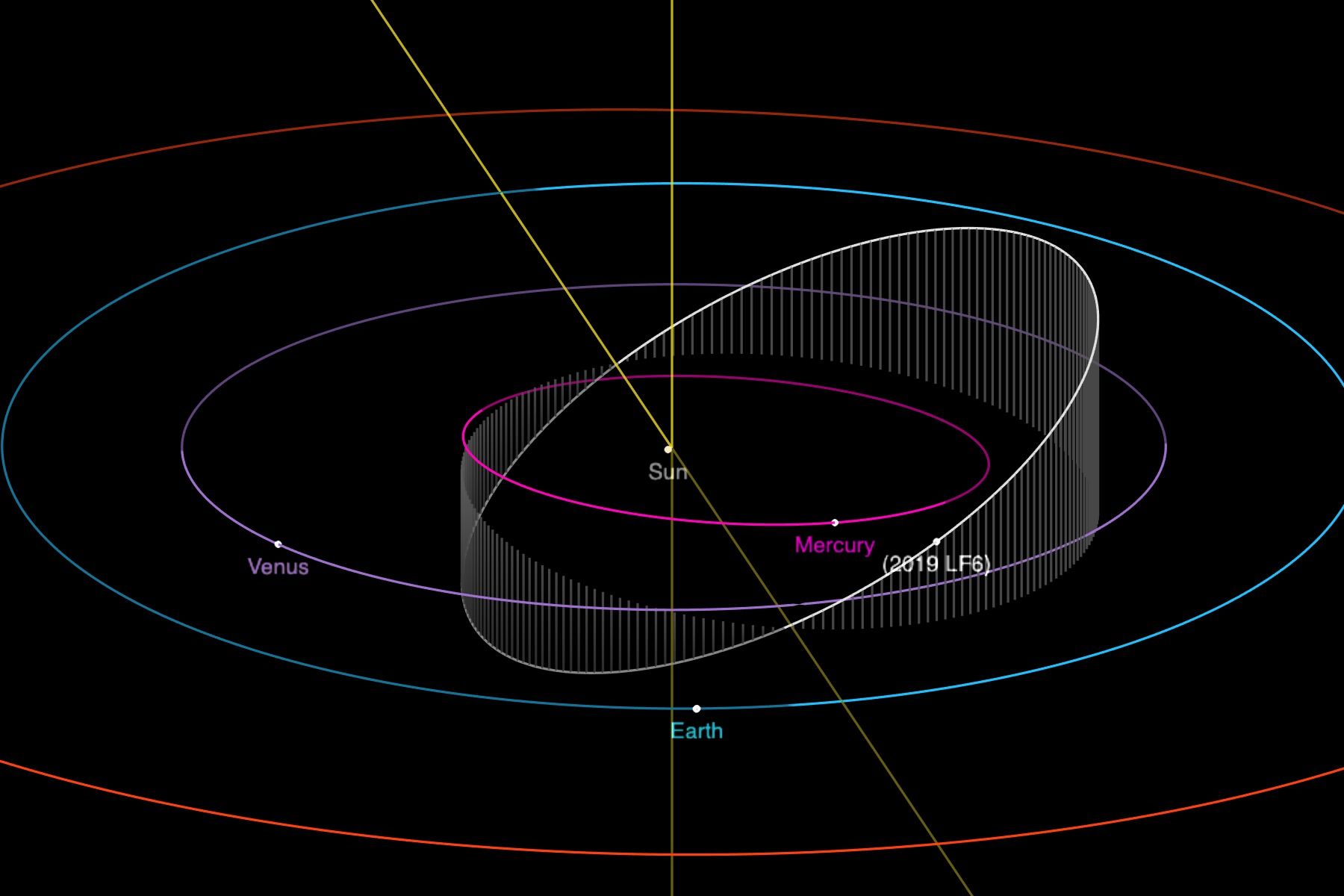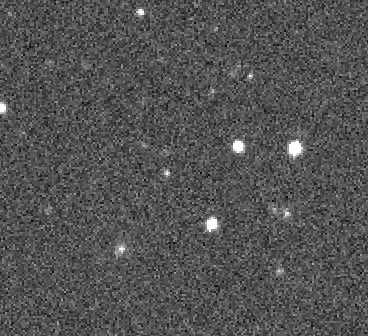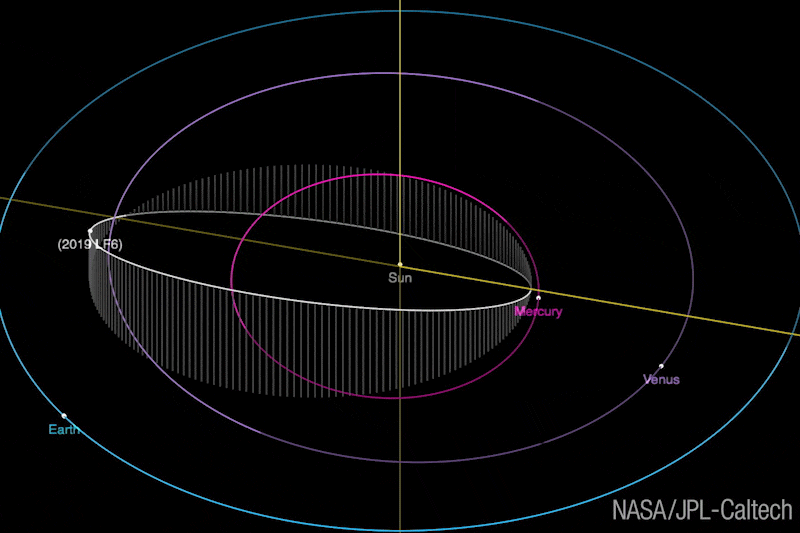Create a free profile to get unlimited access to exclusive videos, sweepstakes, and more!
2019 LF6: The asteroid with the shortest year known

Using data from the Zwicky Transient Facility (ZTF) sky survey, astronomers have discovered a very rare asteroid: One with an orbit entirely inside Earth's orbit around the Sun, and consequently the asteroid with the shortest 'year' found so far. It only takes 151 days to orbit the Sun!
Rocks like this are called Atira asteroids, and as a class they’re very tough to spot. Because they are always inside our orbit, they tend to be near the Sun in the sky. That means the only times we can observe them from Earth are very soon after sunset or just before sunrise.
The newly discovered asteroid, called 2019 LF6, is even more difficult. Its orbit is highly elliptical and stretches from just inside Mercury's orbit to just outside that of Venus. That means it never strays far at all from the Sun, and can only be seen within a half hour or so of sunset or sunrise. Worse, its orbit is tilted by about 30° to that of Earth, so it's not even generally due east or west of the Sun, where most asteroids would lurk.
This is certainly why it's evaded our prying eyes for so long; at about 1 kilometer wide it would've been discovered a long time ago were it not hiding near the Sun. Amazingly, it was about 19th magnitude when it was found; the faintest star you can see with your naked eye is 150,000 times brighter than that! So detecting this asteroid at all was quite a feat, given that it was against a brightish sky background, too.
The short year and tilted orbit immediately made me suspect this little rock has had an encounter or two with Mercury or even more likely Venus; it gets pretty close to Venus and that planet is big enough to affect the orbit more than Mercury could at the same distance. We know very little about LF6 so far, but (speculating here) it may have been a main belt asteroid dropped into the inner solar system by Jupiter, then its orbit altered by Venus. Perhaps further observations, tough as they are, could help determine how it got where it is.
The short orbital period of 151 days just beats out the previous record-holder for shortest year: 2019 AQ3, discovered earlier just this year, and also found by the ZTF! That asteroid has a period of 165 days, and is bigger than LF6 at about 2 kilometers across.
Not many Atira asteroids have been found because they’re so hard to see. Only two dozen are known right now, but it's likely ZTF will find more.
The ZTF is a 123 centimeter telescope with a whopping 600 megapixel camera on it. The telescope and camera have a wide field of view, and each image covers a staggering 47 square degrees — that’s over 200 times the area of the full Moon on the sky. It can image the entire available northern hemisphere sky in just three nights, seeing objects a little fainter than 20th magnitude.
All this is designed to look for transients, objects that change brightness or position. This includes variable stars, supernovae, flares from active galaxies, and solar system objects like comets and asteroids.
It's already found 100 near-Earth asteroids and more than 2,000 in the main belt between Mars and Jupiter. But we don't know much about asteroids closer to the Sun than Earth, so every one we find at the moment adds to our knowledge. Knowing that ZTF found 2019 AQ3 and LF6, I have to wonder if it might even spot a theoretical Vulcanoid, a class of asteroids that orbit the Sun inside Mercury's orbit. None has yet been found, though there have been many searches for them.
Still, just learning more about Atiras is important. How did they get there in those unusual orbits? How many are there? Are they compositionally unique compared to main belt or near-Earth rocks? How does the increased incident sunlight and higher average temperature affect them?
It's funny; these asteroids are pretty close to Earth, closer even than main belt asteroids. LF6 gets to within about 100 million km of Earth! Yet we know so little about them because the Sun overwhelms them in the sky. Even better than ZTF would be a space-based infrared observatory, especially one put in an orbit inside Earth's so it can spot these rocks more easily. Just such an observatory was encouraged in a report by the National Academies just last month, in fact. You can read more about that here.
I'm all for finding these things. Certainly for the science; asteroids are fascinating, and are a key to understanding our solar system. But also for our own self-interest! Some of these can get close enough to Earth to be a threat, and the idea of an impact is something we need to take pretty seriously. A survey 'scope like that would be a big step in the right direction.
Until then, ZTF and other surveys are still keeping their eyes on the sky, and finding these asteroids fairly readily. We can't do anything about a potential threat until we find it first. I'm glad we're looking.




























